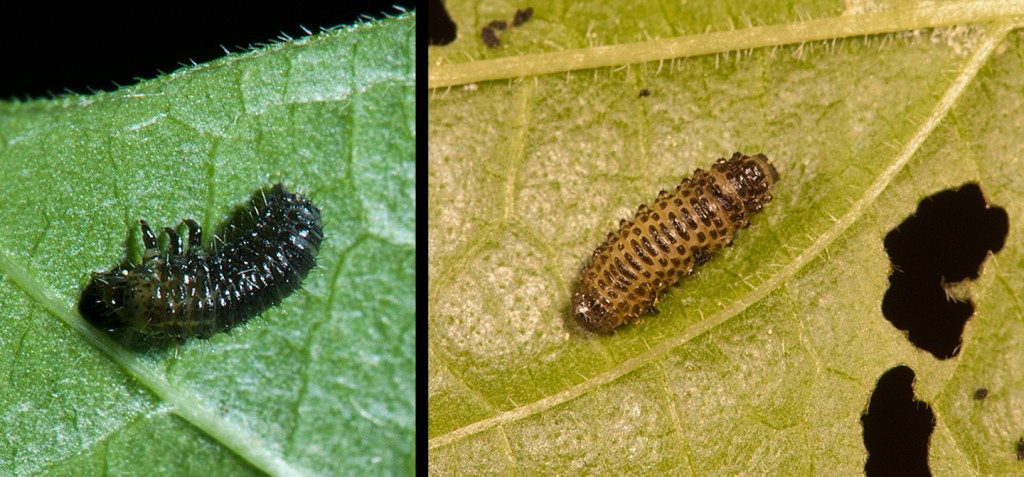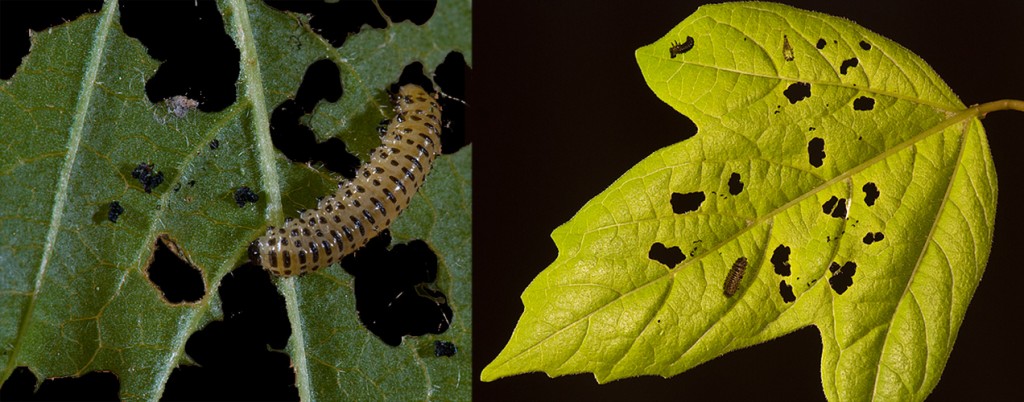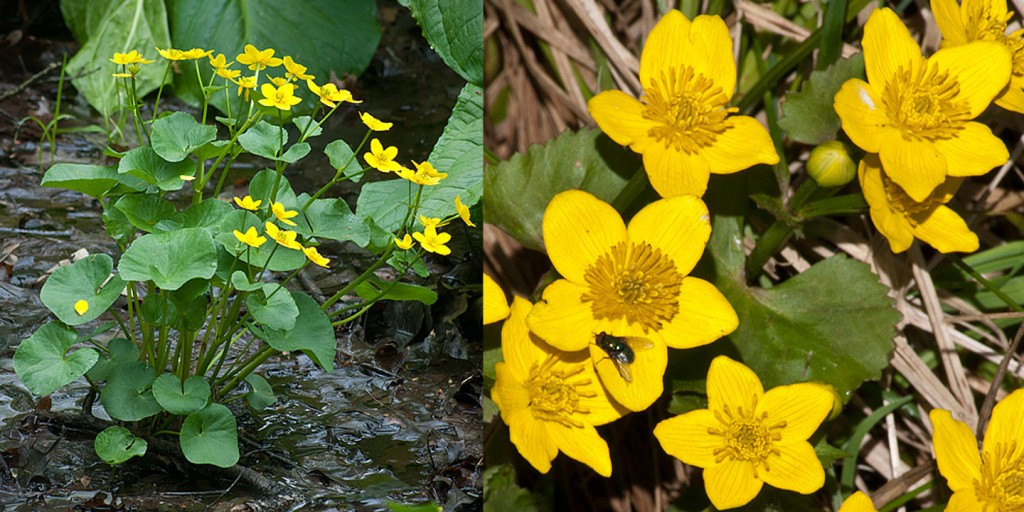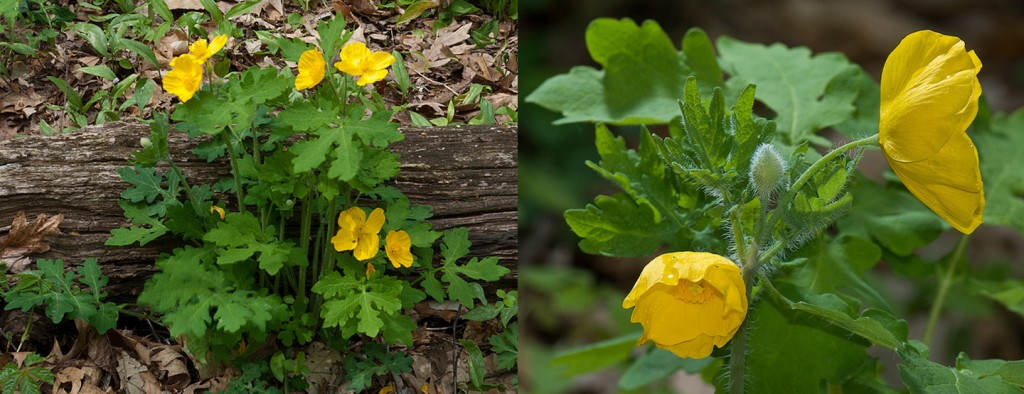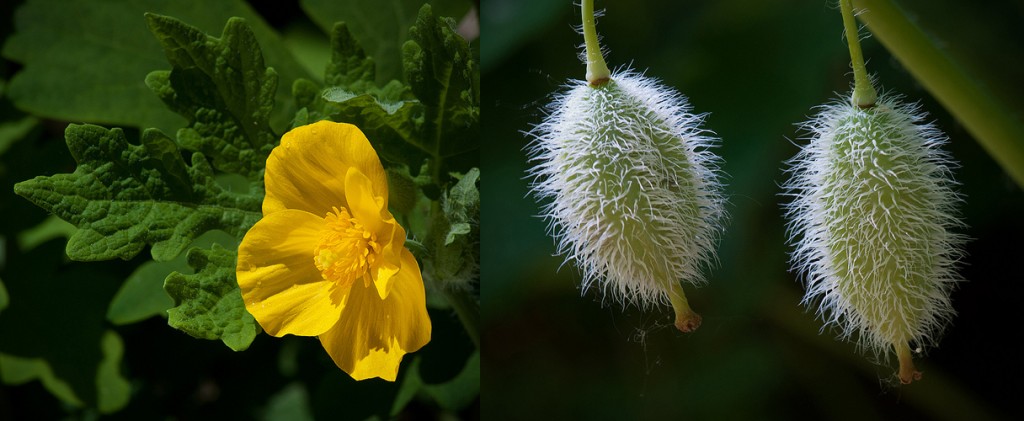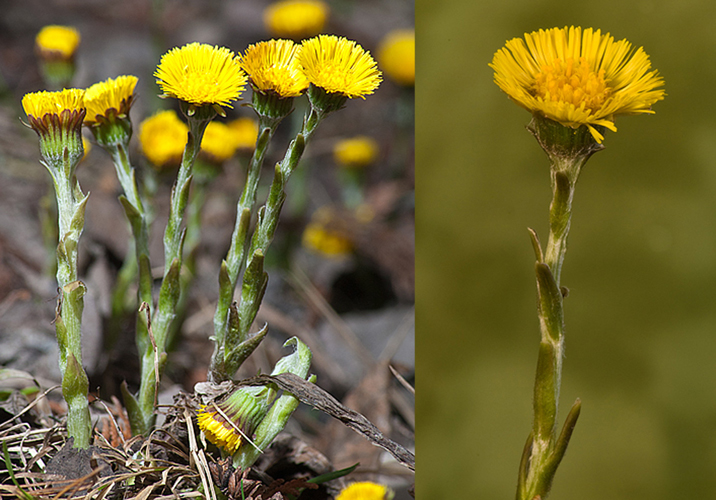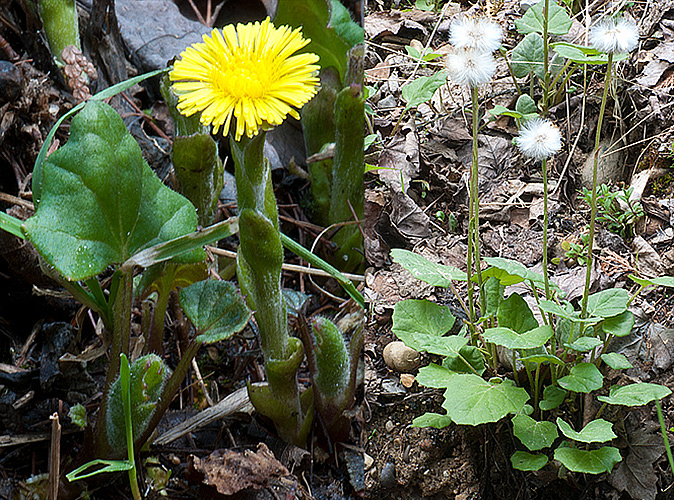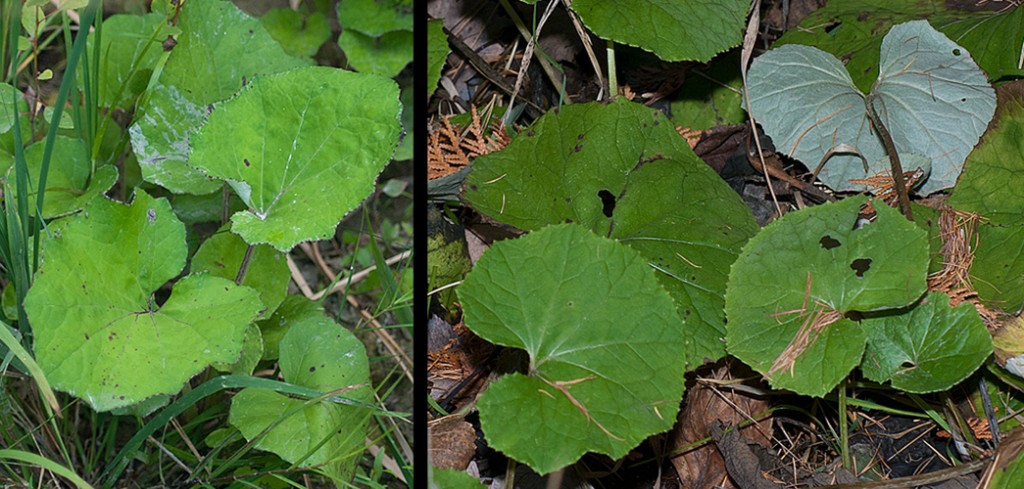Last weekend at the Royal Oak Nature Society’s Open House I was asked about the two types of Yellow Trout Lily (Erythronium americanum) that grow in Tenhave Woods. Some plants have yellow anthers and other plants have brown to red anthers.
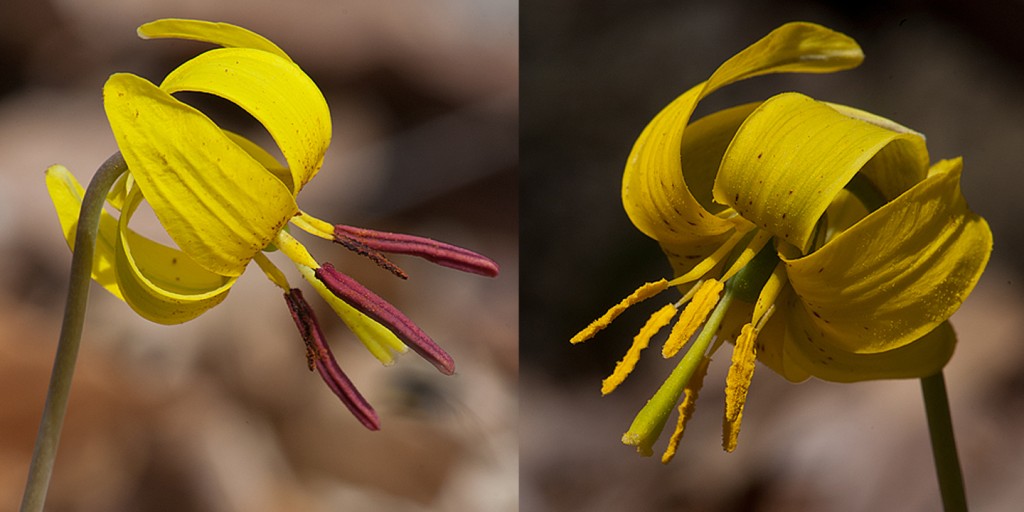
Anther Color in Yellow Trout Lily Tenhave Woods
I did a search of the literature and found Oliver Farwell’s 1938 description of Erythronium americanum var. rubrum. He writes, “In this region we have two very conspicuous variations of this species that could readily be differentiated by size of plants and flowers alone. The smaller one, with green leaves mottled with paler green or dirty white, with mostly entire stigmas, and with yellow stamens, is the typical variety of the species; scapes are from 5 to 10 inches high, with a yellow flower 0.75 [19mm] -1.35 inches [34mm] long….The larger variety [var. rubrum] is one third to one half larger in all its parts; the stigma is usually three-lobed, and the stamens are red, the leaves being mottled with brownish purple” (Oliver A. Farwell, Notes on the Michigan Flora VII, in Papers of the Michigan Academy of Science, Arts, and Letters Vol. XXIII, 1937. Published 1938). His plants were collected in Houghton County in Michigan’s Upper Peninsula. There is no doubt that these entities are the two types we have in Tenhave Woods. What I don’t know is the significance of them.
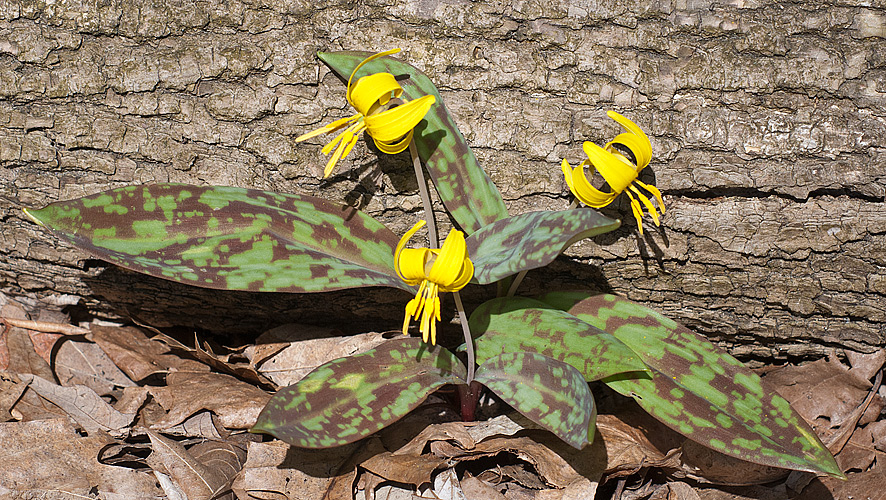
Yellow Trout Lily with Yellow Anthers, Tenhave Woods
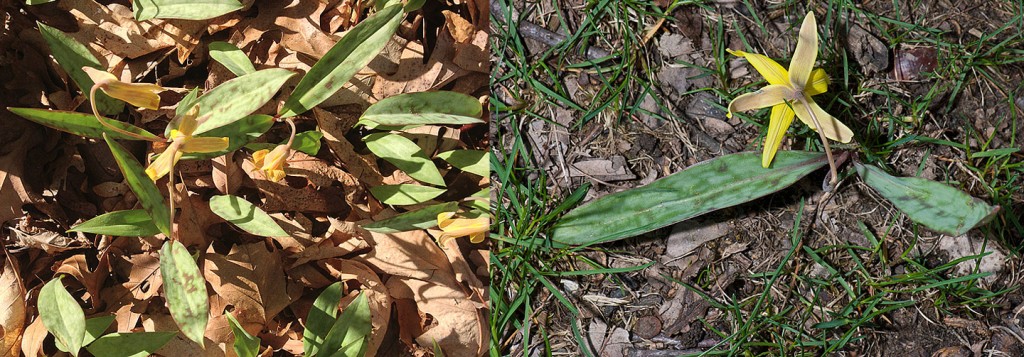
Yellow Trout Lily with Reddish-brown Anthers, Genesee Co., Michigan
Fernald, in the eighth edition of Gray’s Manual of Botany, writes regarding this species “highly variable, needing more study.” He does not mention Farwell’s var. rubrum although he must have known about the name. Gleason, in the New Britton and Brown Illustrated Flora states, “races with yellow and with brown-red anthers exist and some students of the genus have suspected that two species are included.” Fassett in his Spring Flora of Wisconsin merely comments, “anthers yellow or reddish-brown”. Fassett was well known for using names for minor forms of plants but ignored Farwell’s named variety. The Flora of North America states, “filaments yellow, lanceolate; anthers yellow, chestnut brown, or lavender; pollen yellow or brown” but makes no taxonomic distinction.
The plants appear to be distinct and found over a large range. More study is needed including, marking plants to discover if the anther color is consistent from year to year, taking measurement to see if there is a size difference, looking for other characters to distinguish the plants, and looking for intermediate plants. Farwell’s
characters of leaf mottling and size do not hold true in my limited test
sample. After study, we can then hopefully determine if the plants are distinct species, subspecies, varieties, or forms.
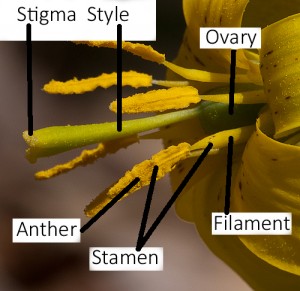
Flower Parts
Here is a review of the parts of a flower. Anther: the part that produces pollen. Filament: the thin structure that supports the anther. The anther and filament combine to make up the stamen. Stigma: the sticky part that receives the pollen. Style: the structure that supports the stigma. Ovary: where the seeds develop. The stigma, style, and ovary combine to make up the pistil.
Copyright 2013 by Donald Drife
Webpage Michigan Nature Guy
Follow MichiganNatureGuy on Facebook

